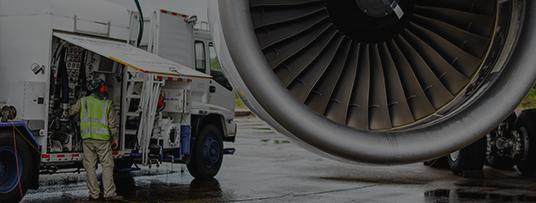When one conjures images of airplanes, one may think of sleek jets gracefully traversing the sky or perhaps smaller propeller-driven aircraft maneuvering on local runways. However, it is essential to recognize that the world of aviation encompasses a wide array of aircraft types, each uniquely designed to fulfill specific roles in civil aviation. In this blog, we shall embark on a comprehensive exploration of some of the most prevalent airplane categories, delving into the nuances of turboprops, piston aircraft, regional jets, and jet planes.
1.Turboprop Aircraft: Turboprop aircraft hold a prominent position in civil aviation, renowned for their reliability and adaptability. These airplanes are driven by turboprop engines, combining the advantages of jet propulsion and traditional propellers. They find frequent application on short to medium-haul flights, making them the preferred choice for regional travel.
One notable example of a turboprop aircraft is the Beechcraft King Air, a model cherished for both business and commuter flights. These aircraft excel at landing on shorter runways, granting access to smaller airports that larger jet planes cannot reach. Turboprops also strike a fine balance between speed, fuel efficiency, and passenger capacity, making them valuable assets in the aviation industry.
2.Piston Aircraft
Piston aircraft often evoke a sense of nostalgia for the early days of aviation and continue to hold a place in modern civil aviation, despite various other aircraft types coming about. These airplanes are driven by reciprocating piston engines, like the engines found in cars, and they are primarily employed for personal and recreational flying.
While they may not match the speed or efficiency of other aircraft, piston airplanes like the Cessna 172 or Piper Cub offer a distinctive and rewarding flying experience. They are known for their ease of operation, rendering them an excellent choice for pilot training and private flying. Piston aircraft also excel on short journeys, providing an intimate connection to the skies for aviation enthusiasts and hobbyists alike.
3.Regional Jets
Regional jets, often abbreviated as RJ's, are a common fixture in the realm of civil aviation. These aircraft are purpose-built for short to medium-haul routes and are typically operated by regional airlines to bridge smaller cities with major transportation hubs. Regional jets present a cost-effective and practical means of delivering frequent and convenient air travel to a broader spectrum of passengers.
One of the most renowned regional jet series is the Embraer E-Jet family, encompassing the E170, E175, E190, and E195 models. These jets are celebrated for their efficiency and passenger comfort, finding use across the globe. Typically accommodating between 70 and 100 passengers, regional jets play a pivotal role in the global aviation network, facilitating connectivity for communities that might otherwise face limited access to air travel.
4.Jet Planes
Jet planes represent the pinnacle of modern air travel, harnessing the power of jet engines to achieve high-speed thrust through jet propulsion. They are the swiftest and most efficient aircraft class, making them the preferred choice for long-haul flights and intercontinental journeys.
Commercial jet airliners come in diverse sizes, with wide-body jets like the Boeing 747, 777, and 787 being capable of carrying hundreds of passengers globally. Narrow-body jets, such as the Airbus A320 and Boeing 737, serve domestic and international routes. With this in mind, jet planes have revolutionized air travel, providing millions worldwide with access to faster, longer-range flights.
Jet planes also take center stage in business aviation, exemplified by corporate jets like the Gulfstream G650, which offer unmatched luxury and speed for executives and VIPs. These aircraft deliver a level of comfort and convenience unparalleled by any other form of transportation.
In addition to commercial and business applications, jet-powered aircraft play a pivotal role in military aviation. Fighter jets like the F-16 and F-35, as well as bombers like the B-2 and B-52, are prime examples of military aircraft employing jet propulsion. These high-performance machines are engineered for a wide range of combat and reconnaissance missions, underscoring the versatility of jet technology in the military domain.
Conclusion
To conclude, the realm of civil aviation is characterized by a diverse array of airplane types, each tailored to specific advantages and applications. From turboprops and piston aircraft to regional jets and jet planes, the aviation industry presents a comprehensive spectrum of choices to explore. Whether you are a casual traveler, a dedicated pilot, or an aviation enthusiast, there exists an ideal airplane type waiting for you to discover and appreciate.
At Aerospace Central, we welcome you to explore our offerings while taking advantage of our online Request for Quotation (RFQ) service for quick quotes on items of interest. Upon receiving your RFQ form, our team will contact you within 15 minutes with a tailored solution for your comparisons. Start your procurement process today and experience why Aerospace Central is the preferred choice for part fulfillment among many customers.
Posted on November 21, 2023 alice miller



 All Orders are Fulfilled in the U.S.A.
All Orders are Fulfilled in the U.S.A. All shipments must comply with U.S.A export laws.
All shipments must comply with U.S.A export laws. No exceptions.
No exceptions.

“We Proudly Support Intrepid Fallen Heroes Fund that serves United States Military Personal experiencing the Invisible Wounds of War : Traumatic Brain Injury (TBI) and Post Traumatic Stress (PTS). Please visit website (www.fallenheroesfund.org) and help in their valiant effort”.
We Hope that You Will Visit Us Again the Next Time You Need Aircraft Parts and Make Us Your Strategic Purchasing Partner.
Request for Quote